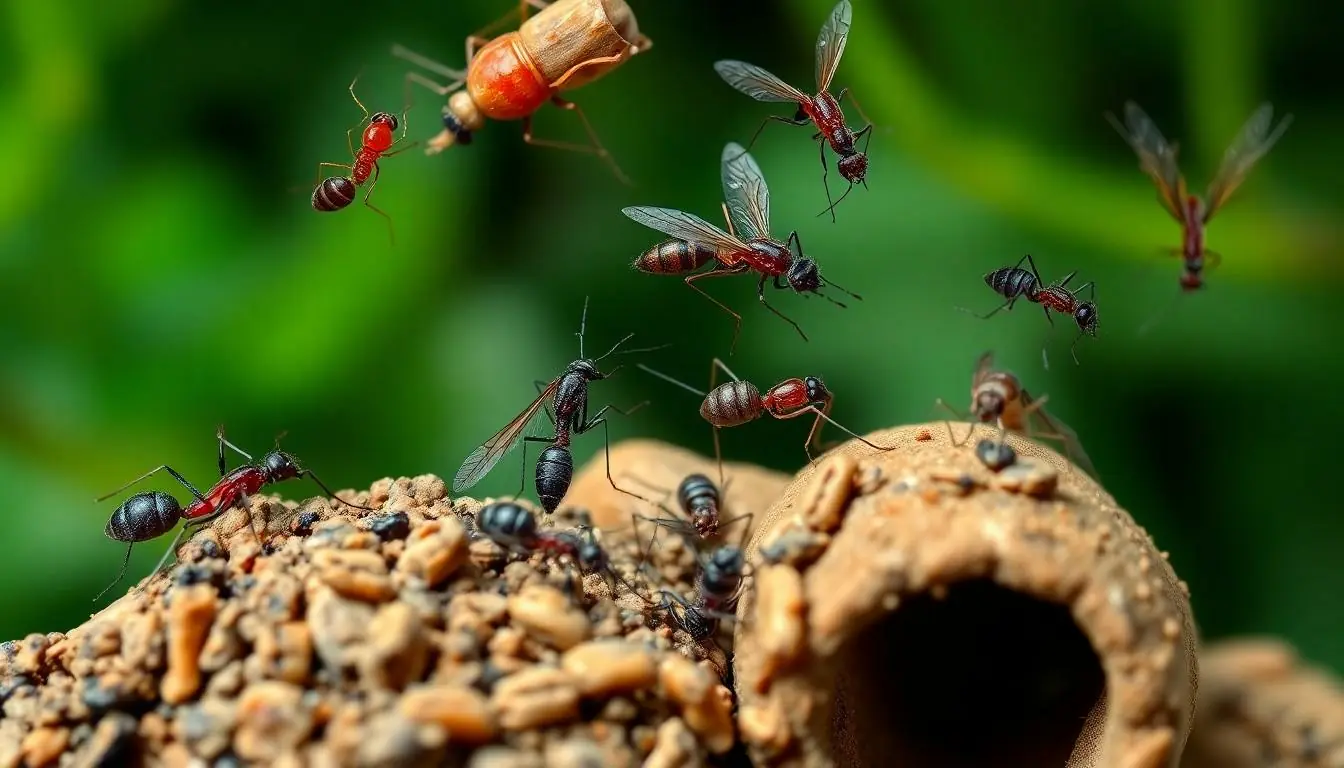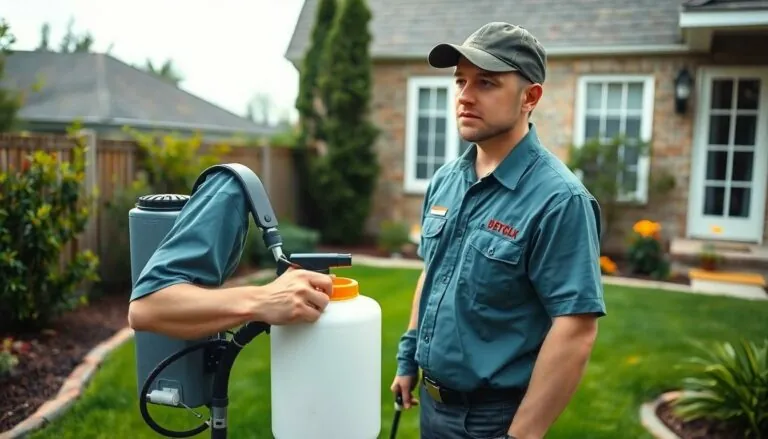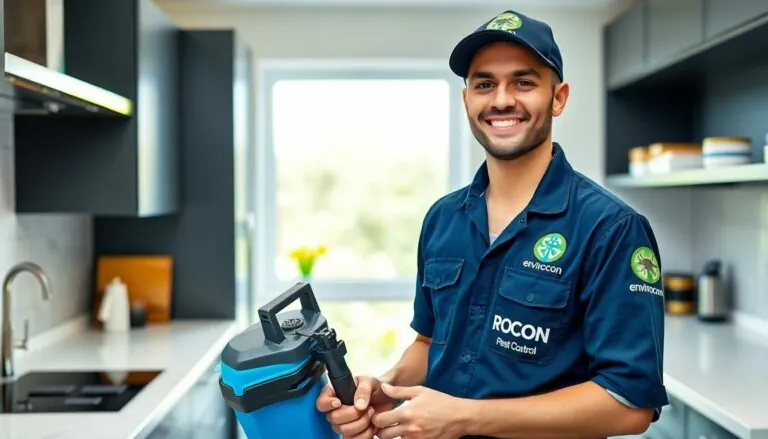Table of Contents
ToggleIn the charming state of Maryland, where crabs reign supreme and the scenery is picturesque, there’s one thing that can turn a lovely day into a nightmare: pests. From sneaky ants to pesky mosquitoes, these uninvited guests seem to have a knack for crashing the party. But fear not! With the right pest control strategies, Marylanders can reclaim their homes and enjoy their crabs in peace.
Overview Of Maryland Pest Control
Maryland’s pest control landscape targets various challenges presented by unwanted insects and rodents. This state faces issues from common pests like ants, mosquitoes, and termites, which threaten both residential comfort and property integrity. Residents rely on professional services to intercept infestations before they escalate.
Many pest control companies employ Integrated Pest Management (IPM) approaches, focusing on prevention and environmentally friendly treatments. Examples of treatments include baiting systems for ants and targeted insecticides for mosquitoes, ensuring minimal impact on the surrounding environment.
In addition to routine inspections, local experts often recommend measures such as sealing entry points and maintaining clean outdoor spaces. Specific recommendations like trimming vegetation away from structures can help reduce pest attraction.
Seasonal changes impact pest behavior, making consistent monitoring crucial throughout the year. Spring sees an uptick in ant and mosquito activity, while fall serves as a key time for rodent prevention. Public awareness campaigns educate residents about identifying and reporting pests, further strengthening community efforts to combat infestations.
Local regulations require pest control operators to be licensed, ensuring compliance with safety standards. This emphasis on certification provides peace of mind for homeowners, knowing professionals utilize safe and effective methods.
By integrating technology, many companies now offer smart monitoring systems, alerting homeowners to potential pest issues in real-time. Through these innovations, Maryland’s pest control industry adapts to evolving challenges, addressing the needs of a diverse population.
Common Pests In Maryland

Maryland’s diverse climates and ecosystems support various pests that can disrupt daily life. Identifying these pests quickly aids in effective management.
Identification Of Pests
Identifying pests requires knowledge of their distinct characteristics. Ants often create trails leading to food sources, while mosquitoes are recognizable by their buzzing sound and tendency to bite. Termites produce mud tubes and wings, indicating their presence. Rodents leave droppings and gnaw marks, particularly near food supplies. Each pest has unique signs that help homeowners recognize an infestation. Prompt identification significantly enhances the chances of successful control, ensuring peace of mind.
Seasonal Pest Issues
Seasonal changes in Maryland contrast pest activity throughout the year. Spring marks the emergence of ants and mosquitoes, often leading to increased nuisance levels. Summer temperatures encourage rapid pest reproduction, particularly for wasps and ticks. Fall brings rodents indoors, seeking warmth and shelter as outdoor temperatures drop. Winter may not eliminate pests but dormant states persist, especially for insects like bedbugs. Consistent monitoring throughout all seasons helps address potential infestations before they become severe.
Pest Control Methods
Effective pest control methods address the challenges posed by infestations, offering multiple strategies for Maryland residents. Understanding the different approaches ensures homeowners can choose what best suits their situation.
Chemical Control Options
Chemical control includes the use of insecticides and pesticides to combat unwanted pests. These products target specific insects like termites and mosquitoes. Application methods vary, such as sprays, fogging, or granular formulations. It’s important for homeowners to select chemicals approved by regulatory bodies like the Environmental Protection Agency. Many pest control companies prioritize low-toxicity and environmentally-friendly options, minimizing harm to people and pets. Professionals often conduct targeted treatments based on the pest type and behavior. By understanding local pest populations, homeowners can effectively manage infestations with chemical control.
Biological Control Approaches
Biological control employs natural predators and parasites to manage pest populations. This method fosters an ecological balance, reducing reliance on chemicals. Beneficial insects, such as ladybugs, help keep aphid numbers in check. Introducing nematodes can control larvae in the soil. In Maryland, it’s common to integrate biological control with other methods, enhancing overall effectiveness. Additionally, this approach minimizes environmental impact while providing long-term pest solutions. Homeowners enjoy reduced chemical exposure, leading to safer outdoor spaces. Education on local ecosystems enriches awareness of beneficial species available for pest management in residential areas.
Choosing A Pest Control Service
Selecting a pest control service requires careful consideration. Residents should prioritize finding a company that understands local pest issues and adheres to state regulations.
Factors To Consider
Reputation stands as a key factor. Check online reviews and ask for referrals to gauge customer satisfaction. License and insurance are crucial too; ensure the company meets Maryland’s regulatory standards. Experience plays a significant role; opt for businesses with a proven track record in handling specific pests. Additionally, inquire about methods used; companies should favor Integrated Pest Management for environmentally conscious solutions. Cost often influences decisions, so compare quotes, but don’t sacrifice quality for price. Availability matters; choose a provider with flexible scheduling to address pest issues promptly.
Questions To Ask
What is the company’s approach to pest management? Request details on their treatment methods for your specific pest types. How do technicians handle safety measures? Inquire about safety protocols to protect family and pets during treatments. What guarantees or warranties do they offer? Ensure satisfaction with their services by understanding their policies. How frequently do they recommend follow-up treatments? Regular monitoring can prevent pest recurrence. Lastly, ask how they customize plans according to seasonal changes and specific insect behaviors; tailored strategies ensure effective long-term control.
Best Practices For Prevention
Effective pest prevention requires a proactive approach. Regularly inspecting homes for potential entry points minimizes risks. Residents should seal cracks, gaps, and holes found around windows, doors, and foundations. Keeping outdoor spaces clean reduces attraction; debris and stagnant water invite pests.
Implementing proper landscaping practices also helps. Trimming shrubs and trees that touch structures limits pathways for pests. Managing mulch depth prevents moisture accumulation, discouraging termites and other wood-destroying insects. Storing firewood away from homes ensures it remains dry and pest-free.
Maintaining a tidy kitchen prevents food access for pests. Regularly disposing of garbage inside sealed containers deters rodents and insects. Additionally, leaving no food remnants on countertops or floors can significantly reduce pest activity. Homeowners should also properly store pet food and grains in airtight containers.
Utilizing integrated pest management strategies promotes long-term solutions. Monitoring for early signs of infestations enables quick response. Residents may consider placing bait stations around their property to intercept persistent pests.
Involvement in public awareness campaigns further strengthens community efforts. Educating neighbors about common pests creates a collective defensive strategy. Reporting sightings strengthens local pest control initiatives and reduces risks for everyone.
Scheduling seasonal inspections with pest control professionals enhances confidence. These services often employ advanced technology for better monitoring. Professional guidance selects the most effective preventive measures tailored to specific pest issues. With a comprehensive approach, Maryland residents maintain harmonious living spaces free from unwanted guests.
Maryland residents can effectively manage pest issues by embracing a proactive approach to pest control. By understanding local pest behaviors and employing integrated pest management strategies, homeowners can significantly reduce the risk of infestations. Regular inspections and routine maintenance play a crucial role in keeping homes pest-free.
Choosing the right pest control service is essential for long-term success. Homeowners should prioritize companies that adhere to state regulations and utilize environmentally friendly methods. With the right knowledge and resources, Maryland residents can enjoy their beautiful surroundings without the nuisance of pests.




